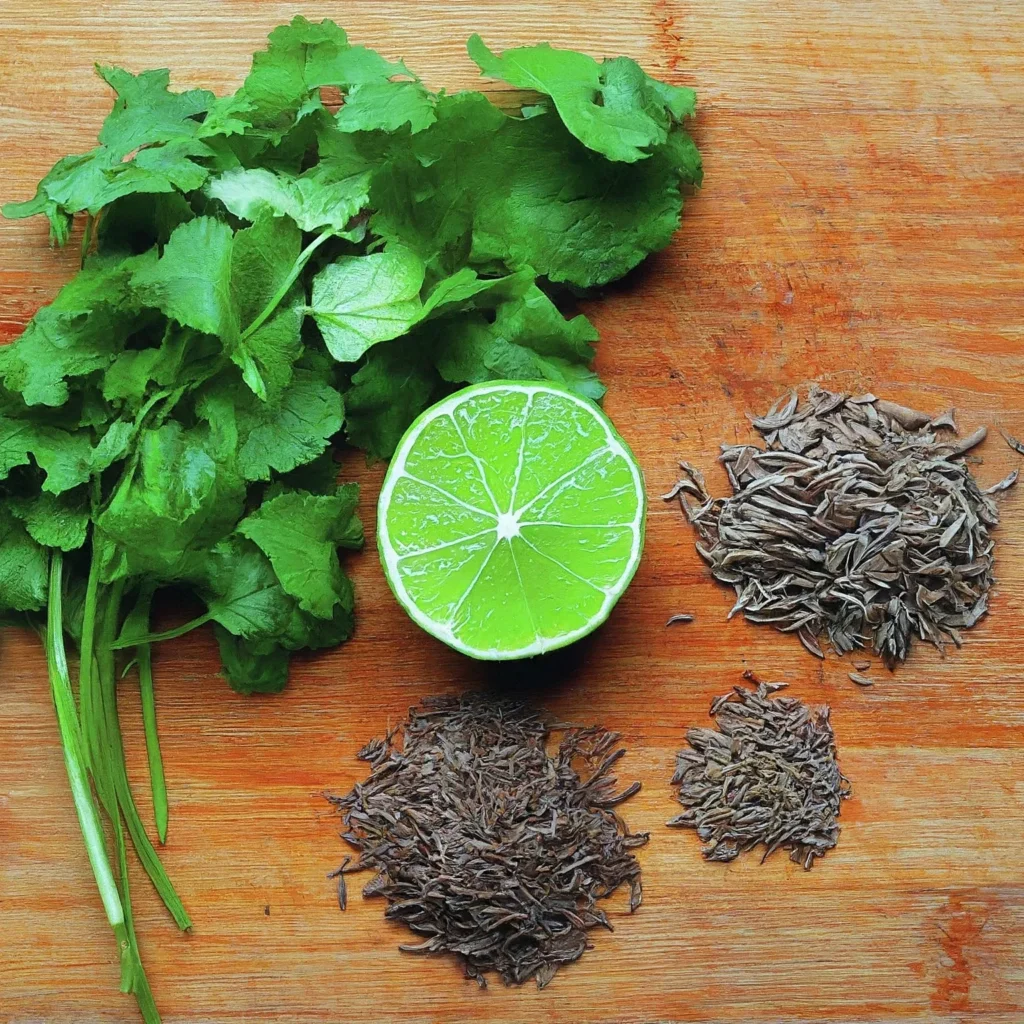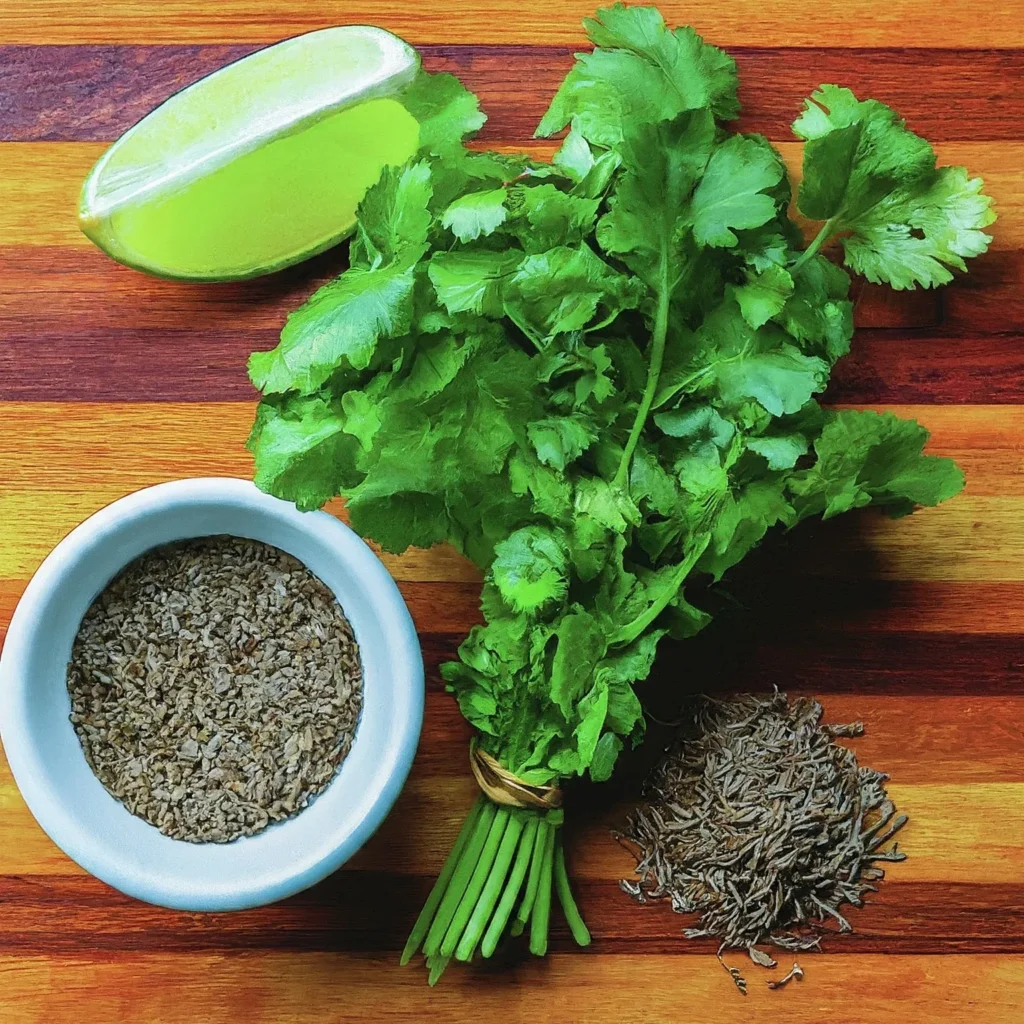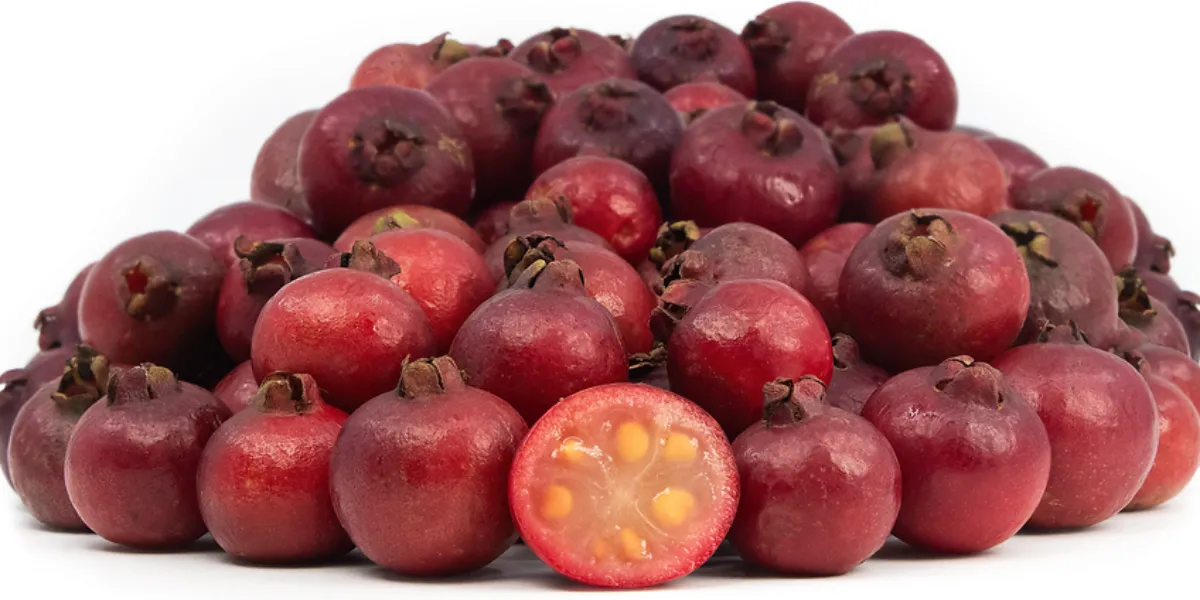Cilantro, also known as coriander leaves, is a popular herb known for its vibrant green color and unique flavor profile. However, some people find its taste “soapy” or unpleasant.
But fret not, cilantro-dislikers! There are various substitutes you can use to add that fresh, aromatic touch to your dishes.
Exploring Substitutes:
- Parsley: This readily available herb offers a similar freshness to cilantro with a slightly bitter undertone. Use it in a 1:1 ratio for dishes like salsa, guacamole, or soups.
- Thai Basil: A sweeter and more complex alternative, Thai basil complements Asian-inspired dishes like stir-fries or curries. Use it sparingly (about half the amount of cilantro) to avoid overpowering the flavors.
- Lime: While not a direct herb substitute, a squeeze of lime juice adds a citrusy brightness that can mimic the refreshing character of cilantro. It works well in dressings, marinades, and salsas.
Beyond the Herb Garden:
- Cumin: This warm, earthy spice pairs beautifully with Mexican and Tex-Mex flavors. Use a sprinkle in tacos, burritos, or chili instead of cilantro.
- Caraway Seeds: These tiny seeds offer a licorice-like aroma and can be used in small quantities to enhance the flavor of sausages, cabbage dishes, and rye bread.
Making the Switch:
- Start small: Begin with a lesser amount of the substitute and adjust to your taste preference.
- Consider the dish: Choose a substitute that complements the overall flavor profile of your recipe.
- Get creative: Experiment with different combinations of herbs and spices to create your unique flavor twist.
Table of Contents
ToggleFAQs:
- Is coriander seed a good substitute for cilantro? While they come from the same plant, coriander seeds have a different, citrusy flavor. Use them sparingly in cooked dishes where their subtle notes can blend well.
- Can I omit cilantro entirely? In many cases, yes. Depending on the recipe, you might miss the fresh element, but other ingredients can often compensate.
- What are the benefits of using substitutes? Exploring alternatives opens up a wider range of flavors and allows you to enjoy dishes even if you dislike cilantro.
- Are there any side effects to using substitutes? Most substitutes are safe for consumption but check for any potential allergies before incorporating them into your diet.
- Can I use other herbs like mint or dill? While they have their distinct flavors, you can experiment with them in certain recipes, keeping in mind that the overall taste profile will differ.
- How can I store leftover substitutes? Store fresh herbs like parsley and Thai basil in a sealed container in the refrigerator for a few days. Store spices like cumin and caraway seeds in a cool, dark place for several months.
- Where can I find these substitutes? Most grocery stores carry fresh herbs and common spices. Ethnic and specialty stores might offer a wider selection.
- Can I use dried herbs instead of fresh ones? While possible, dried herbs tend to have a less intense flavor. Use about 1/3 of the amount of dried herb compared to fresh cilantro.
- How can I mask the soapy taste of cilantro? If you’re trying to salvage a dish with too much cilantro, adding a squeeze of lime juice or a pinch of sugar can help balance the flavor.
- Are there any substitutes for people with cilantro allergy? Unfortunately, there’s no direct substitute for those with a cilantro allergy. It’s best to avoid the herb completely and consult a healthcare professional if you experience any allergic reactions.
Remember, cooking is about exploration and having fun! So experiment with these substitutes and discover your favorite way to add flavor to your meals.

Cilantro Substitutes: A Comparison Table
Here’s a table summarizing the key characteristics and uses of common cilantro substitutes:
| Substitute | Flavor Profile | Best Uses | Ratio to Cilantro |
|---|---|---|---|
| Parsley | Fresh, slightly bitter | Salads, soups, dips, guacamole | 1:1 |
| Thai Basil | Sweet, anise-like, with citrus notes | Stir-fries, curries, noodle dishes | 1:2 (use less) |
| Lime Juice | Bright, citrusy | Dressings, marinades, salsas | N/A (not a direct substitute) |
| Cumin | Warm, earthy, slightly nutty | Tacos, burritos, chili, Indian curries | A pinch per serving |
| Caraway Seeds | Licorice-like, slightly peppery | Sausages, cabbage dishes, rye bread | 1/4 teaspoon per serving |
drive_spreadsheetExport to Sheets
Additional Tips:
- Fresh vs. Dried: Fresh herbs generally offer a more vibrant flavor than dried ones. However, dried herbs can be a convenient option when fresh options are unavailable.
- Adjusting for Taste: Remember, taste preferences are subjective. Start with a small amount of the substitute and adjust according to your liking.
- Explore Combinations: Don’t be afraid to experiment! Combining different substitutes or using them alongside other spices can create unique and interesting flavor profiles.
With these tips and substitutes in your arsenal, you can confidently navigate the world of cooking, even if cilantro isn’t your cup of tea!
Creative Twists with Cilantro Substitutes
While substitutes can replicate the general function of cilantro in a recipe, they can also offer exciting opportunities to explore new taste dimensions. Here are some creative twists you can try:
Fusion Flavors:
- Mediterranean Twist: Pair parsley and mint with a squeeze of lemon juice to bring a Mediterranean touch to salads, dips, or grilled vegetables.
- Asian Fusion: Combine Thai basil with a pinch of ginger and garlic to create an Asian-inspired flavor profile for stir-fries or noodle dishes.
Spice Up Your Life:
- Spicy Mexican: Add a sprinkle of chili powder or cayenne pepper to cumin or caraway seeds to introduce a subtle heat to your Tex-Mex dishes.
- Middle Eastern Flair: Combine parsley with a pinch of sumac and a drizzle of olive oil for a Middle Eastern-inspired marinade for chicken or fish.
Herbal Infusions:
- Basil Pesto: Swap out some of the basil in your pesto recipe with Thai basil for a unique and flavorful twist.
- Cilantro Lime Replacement: Instead of using cilantro in your favorite salsa recipe, replace it with a combination of parsley, lime juice, and a pinch of cumin for a surprisingly delicious substitution.
Remember, these are just starting points! Get creative, experiment with different combinations, and discover your favorite ways to use cilantro substitutes. With a little exploration, you can unlock a world of flavor possibilities, even without the “soapy” taste of cilantro.
Benefits and Side Effects of Cilantro Substitutes
While choosing a substitute primarily focuses on mimicking cilantro’s flavor, it’s important to consider the potential benefits and side effects of each option. Here’s a breakdown of some common substitutes:
Parsley:
Benefits: Rich in vitamins A, C, and K, promotes healthy bones and eyes and acts as an antioxidant. Side effects: Generally safe, but excessive consumption can cause stomach upset in some individuals.
Thai Basil:
Benefits: Contains essential oils with potential anti-inflammatory and antibacterial properties. Side effects: May cause mild allergic reactions in individuals sensitive to other members of the mint family.

Lime Juice:
Benefits: Excellent source of vitamin C, boosts immunity, aids digestion. Side effects: Can cause heartburn or irritation in individuals with sensitive stomachs or acid reflux.
Cumin:
Benefits: May help regulate blood sugar, aid digestion, and provide iron and manganese. Side effects: Generally safe, but large quantities can cause nausea, vomiting, or diarrhea.
Caraway Seeds:
Benefits: May support digestion, and potentially have anti-fungal properties. Side effects: This may cause allergic reactions in individuals with birch pollen allergies, not recommended for pregnant or breastfeeding women.
Remember:
- These are general points, and individual experiences might vary.
- Consult a healthcare professional if you have any concerns about potential allergies or interactions with medications.
- When introducing new foods or herbs, start with a small amount to assess your tolerance.














